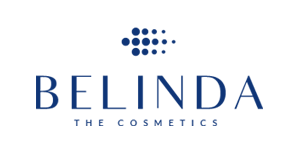The Complete Guide to the 22716 GMP Certification Process
In the competitive global marketplace, ensuring product safety and quality is more critical than ever. For companies in the cosmetic and personal care industries, adhering to Good Manufacturing Practices (GMP) is essential. The 22716 GMP Certification Process offers a structured approach to achieving compliance, boosting consumer confidence, and meeting regulatory requirements. Let’s explore the steps, benefits, and key insights into this certification process.
What Is the 22716 GMP Certification?
The ISO 22716 GMP Certification outlines guidelines for Good Manufacturing Practices specific to the cosmetic industry. It focuses on the production, control, storage, and shipment of cosmetic products, ensuring safety and quality at every stage. By obtaining this certification, businesses demonstrate their commitment to high standards and regulatory compliance.
Why Is the 22716 GMP Certification Important?
Achieving the 22716 GMP Certification offers numerous benefits:
Consumer Confidence: Certified companies ensure their products meet stringent safety and quality standards.
Regulatory Compliance: It helps meet local and international regulatory requirements.
Competitive Advantage: Certification sets businesses apart in a crowded market.
Operational Efficiency: Implementing GMP reduces errors, waste, and inefficiencies.
Key Principles of 22716 GMP
The 22716 GMP Certification Process is built on several core principles:
Personnel Hygiene and Training: Employees must follow strict hygiene practices and receive regular training.
Facility Management: Manufacturing facilities should maintain a clean and controlled environment.
Equipment Maintenance: All equipment must be regularly cleaned, calibrated, and maintained.
Documentation: Proper documentation ensures traceability and consistency.
Quality Control: Ongoing testing and quality checks are essential to maintain product integrity.
Steps in the 22716 GMP Certification Process
1. Application and Gap Analysis
Begin by submitting an application to a certification body. Conduct a gap analysis to compare your current practices with ISO 22716 requirements. This step identifies areas needing improvement.
2. Documentation Review
Prepare and review essential documentation, including:
Standard Operating Procedures (SOPs)
Quality manuals
Training records
Cleaning protocols
3. Implementation
Implement GMP guidelines throughout your operations. Key areas include:
Establishing hygiene protocols
Upgrading facility layouts
Conducting employee training
4. Internal Audit
Before the official audit, perform an internal audit to ensure compliance. This step helps identify and rectify any issues beforehand.
5. Certification Audit
A third-party auditor will evaluate your compliance with ISO 22716 standards. The audit typically consists of two stages:
Stage 1: Document review and initial assessment.
Stage 2: On-site audit to verify implementation.
6. Certification Issuance
Upon successful completion, the certification body issues your ISO 22716 GMP Certificate. This certification is valid for a specified period, with regular surveillance audits to maintain compliance.
Industries That Benefit from ISO 22716 Certification
The 22716 GMP Certification Process is particularly relevant to:
Cosmetics Manufacturers: Ensuring the safety of skincare, makeup, and haircare products.
Personal Care Companies: Compliance for products like soaps, lotions, and shampoos.
Contract Manufacturers: Building trust with client brands by adhering to GMP standards.
Ingredient Suppliers: Demonstrating quality control in raw material production.
The Role of Documentation in GMP Compliance
Documentation is the backbone of the 22716 GMP Certification Process. Proper records ensure traceability and accountability. Key documents include:
Batch production records
Cleaning and maintenance logs
Training records
Supplier certifications
Common Challenges and How to Overcome Them
1. Inadequate Training:
Solution: Regular, comprehensive training programs for staff.
2. Documentation Gaps:
Solution: Implement a robust document management system.
3. Facility Limitations:
Solution: Upgrade and reorganize facilities to meet GMP standards.
4. Audit Preparedness:
Solution: Conduct thorough internal audits before the official assessment.
Benefits of Partnering with a Trusted Certification Body
Collaborating with an experienced certification provider ensures:
Expert guidance throughout the process.
Customized solutions tailored to your business needs.
Efficient and smooth certification journey.
Conclusion: Why Invest in the 22716 GMP Certification Process?
Achieving the 22716 GMP Certification is not just about compliance—it’s about building trust, enhancing reputation, and gaining a competitive edge in the global market. By following the outlined steps and partnering with a trusted certification body, your business can ensure product safety, improve operational efficiency, and foster consumer confidence.
Ready to start your journey toward certification? Contact us today to learn more about the 22716 GMP Certification Process and take the first step to quality excellence!
- Get Your Legal Advice
- All Experts Lawyers
- All Experts Lawyers
- Great Discounted Rates
- Fighting for The Average Joe
- Get The Money You Deserve
- All Experts Lawyers
- Justice For All


Point of View
Our Vision
A lawyer or attorney is a person who practices law, as an advocate, attorney, attorney at law, barrister, barrister-at-law, bar-at-law, civil law notary, counsel, counselor, counselor, counselor at law, solicitor, chartered legal executive, or public servant preparing, interpreting and applying law, but not as a paralegal or charter executive secretary. Working as a lawyer involves the practical application of abstract legal theories and knowledge to solve specific individualized problems, or to advance the interests of those who hire lawyers to perform legal services.

